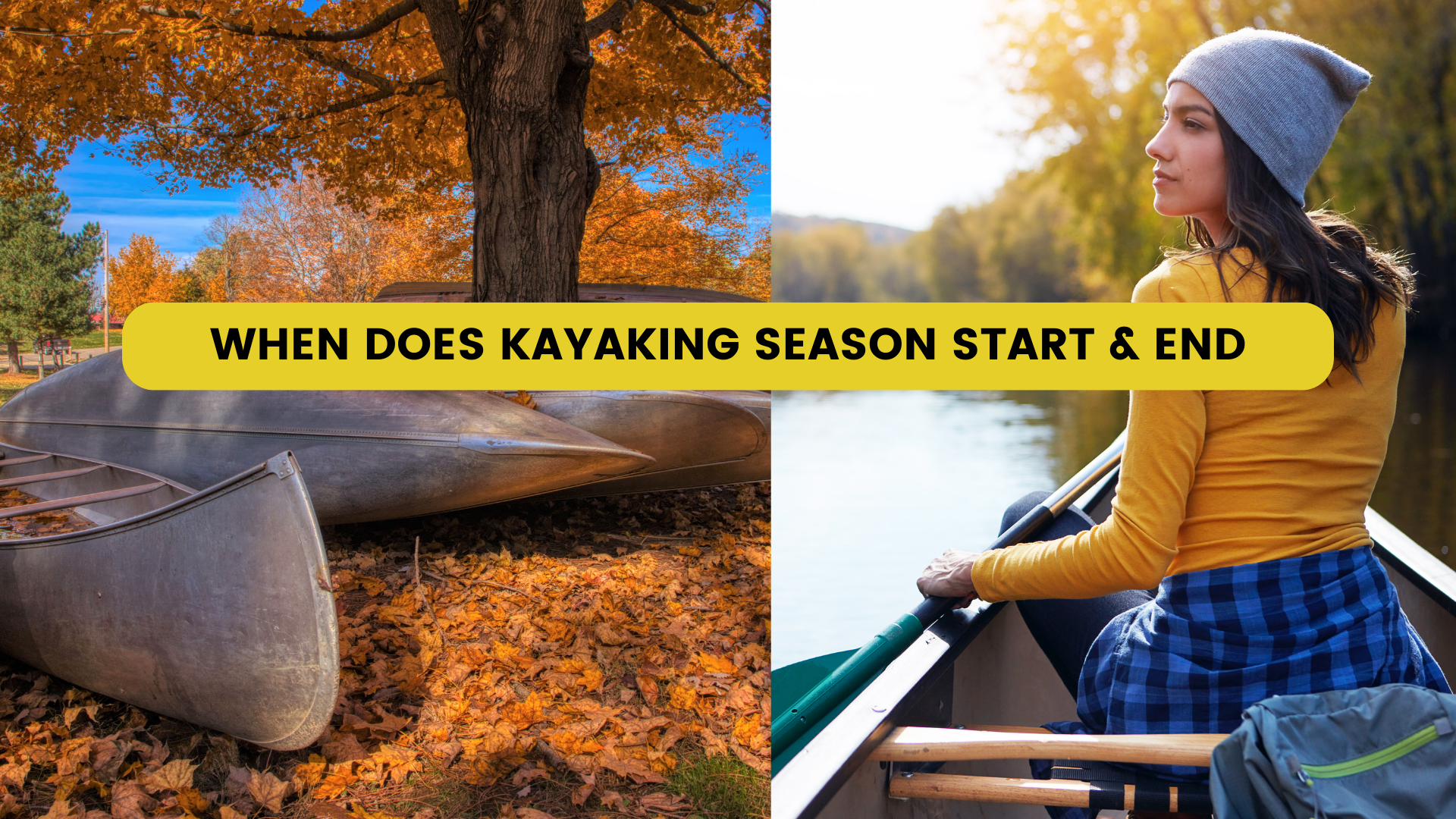When Does Kayaking Season Start & End
A lot of people who love the outdoors go kayaking, which is the art of sliding through calm water. No matter how experienced you are with paddling or how eager you are to try it for the first time, you need to know when the kayaking season begins and ends so you can plan your next trip on the water.
We’ll talk about the different paddling seasons, the things that affect them, and how you can get the most out of your trips all year long. There’s a specific season for it. As a kayaking enthusiast, you may be wondering when the season starts and ends. In this friendly guide, we’ll help you determine the best times to hit the water and make the most of your kayaking adventures.
Factors Affecting Kayaking Season
The seasons may vary depending on several factors, including your location, the local climate, and your personal preferences. Here are some factors to consider when determining the best time for kayaking in your area:
Weather: The weather plays a significant role in determining the season. In general, the warmer months are more suitable for kayaking, as they offer pleasant weather conditions and calmer waters.
Water Temperature: It’s essential to consider water temperatures when planning your kayaking trips. Cold water can be dangerous, especially if you accidentally capsize. In most regions, water temperatures are warmer during the late spring, summer, and early fall months.
Wildlife: Some kayakers enjoy the opportunity to observe wildlife in their natural habitat. If this is important to you, research the best times to spot local wildlife in your kayaking destination.
When Does Seasons Start For Kayaking?
In most areas, the season starts in late spring or early summer. This is when temperatures start to rise, and water conditions become more favorable for paddling. However, this may vary depending on the local climate and water conditions. For example, in some warmer regions, you may be able to start kayaking as early as March or April.
Always check the local weather and water conditions before embarking on your kayaking adventure. Additionally, it’s important to consider the type of kayaking you plan on doing, as different types of kayaking may have different optimal seasons. For instance, sea kayaking is often best in the summer months when ocean conditions are calmer
while whitewater kayaking thrives during the spring snowmelt when rivers are running high and fast. Regardless of the timing, always make sure to wear appropriate gear and ensure that you have the necessary experience and skills for the type of kayaking you’ll be undertaking. By doing so, you’ll be able to fully enjoy the beauty and excitement of kayaking.
When Does the Seasons End for Kayaking?
The season usually ends in late fall or early winter, as temperatures begin to drop and water conditions become less favourable. In colder regions, the season may end as early as September or October. However, in warmer climates, you may be able to kayak well into November or even December.
Remember that safety should always be your top priority, so be sure to check local weather and water conditions before heading out. It’s important to note that the end of the season can vary greatly depending on where you are located and the type of water you are paddling on.
For example, ocean kayaking may have a longer season than river kayaking, as rivers can become dangerous with increased water flow and debris during the colder months. If you’re keen on extending your kayaking adventures, consider exploring indoor or heated water facilities, which offer a controlled environment for year-round paddling.
No matter when or where you choose to kayak, always wear appropriate gear, including a life jacket, and paddle with a buddy to ensure a safe and enjoyable experience. Happy paddling!
Kayaking Outside of the Season
If you’re an experienced kayaker and well-prepared, you might be able to kayak outside the typical season. However, keep in mind that this comes with increased risks, such as colder water temperatures and more unpredictable weather conditions. Ensure you have the proper equipment, clothing, and safety gear, and always let someone know your plans before venturing out on the water.
Conclusion
The kayaking season generally starts in late spring or early summer and ends in late fall or early winter. However, this can vary depending on your location, local climate, and personal preferences.
Always prioritize safety and check local weather and water conditions before embarking on your kayaking adventures. Remember, the best time to kayak is when you can fully enjoy the experience, so be prepared, be safe, and have a great time out on the water!

